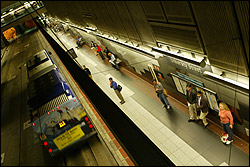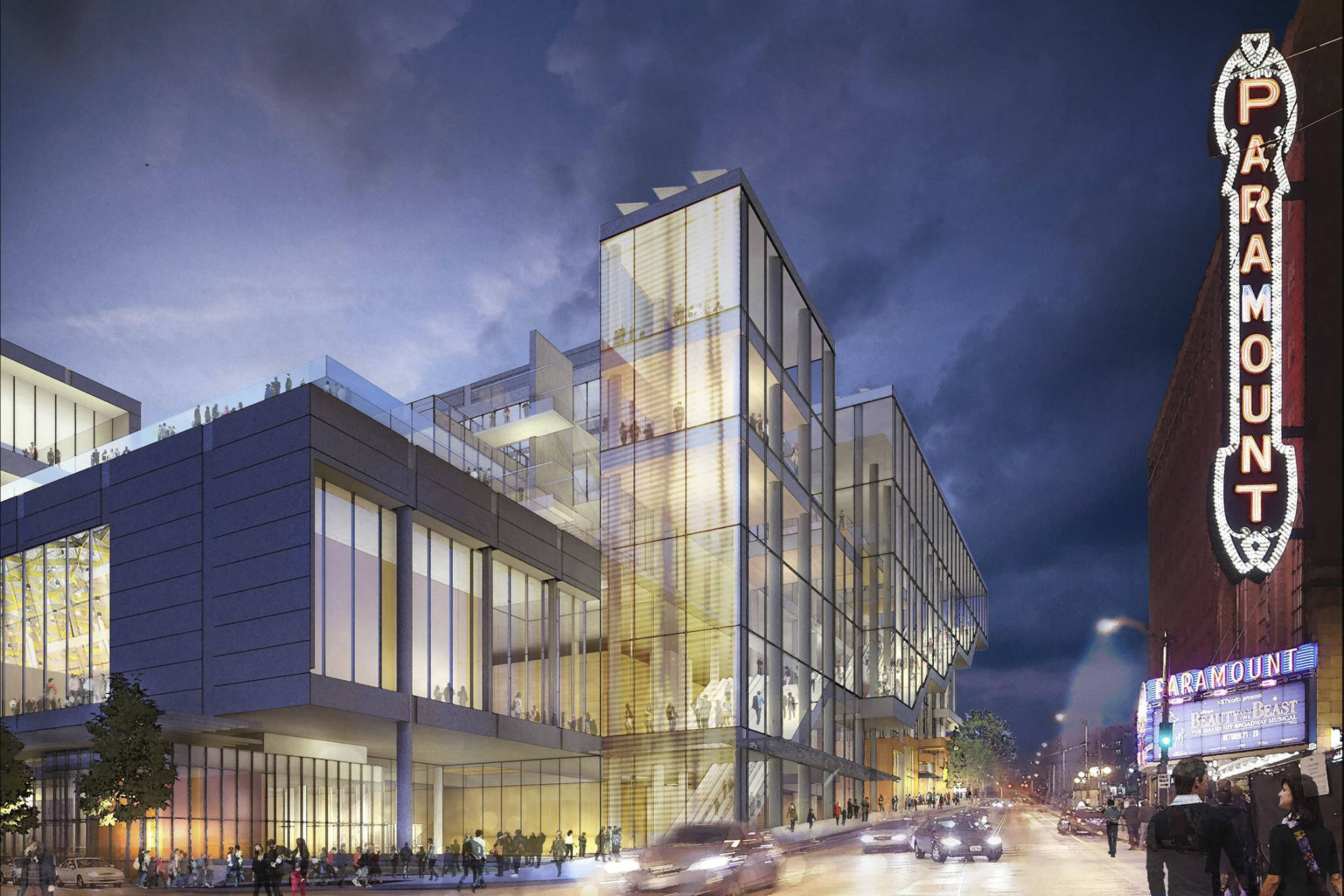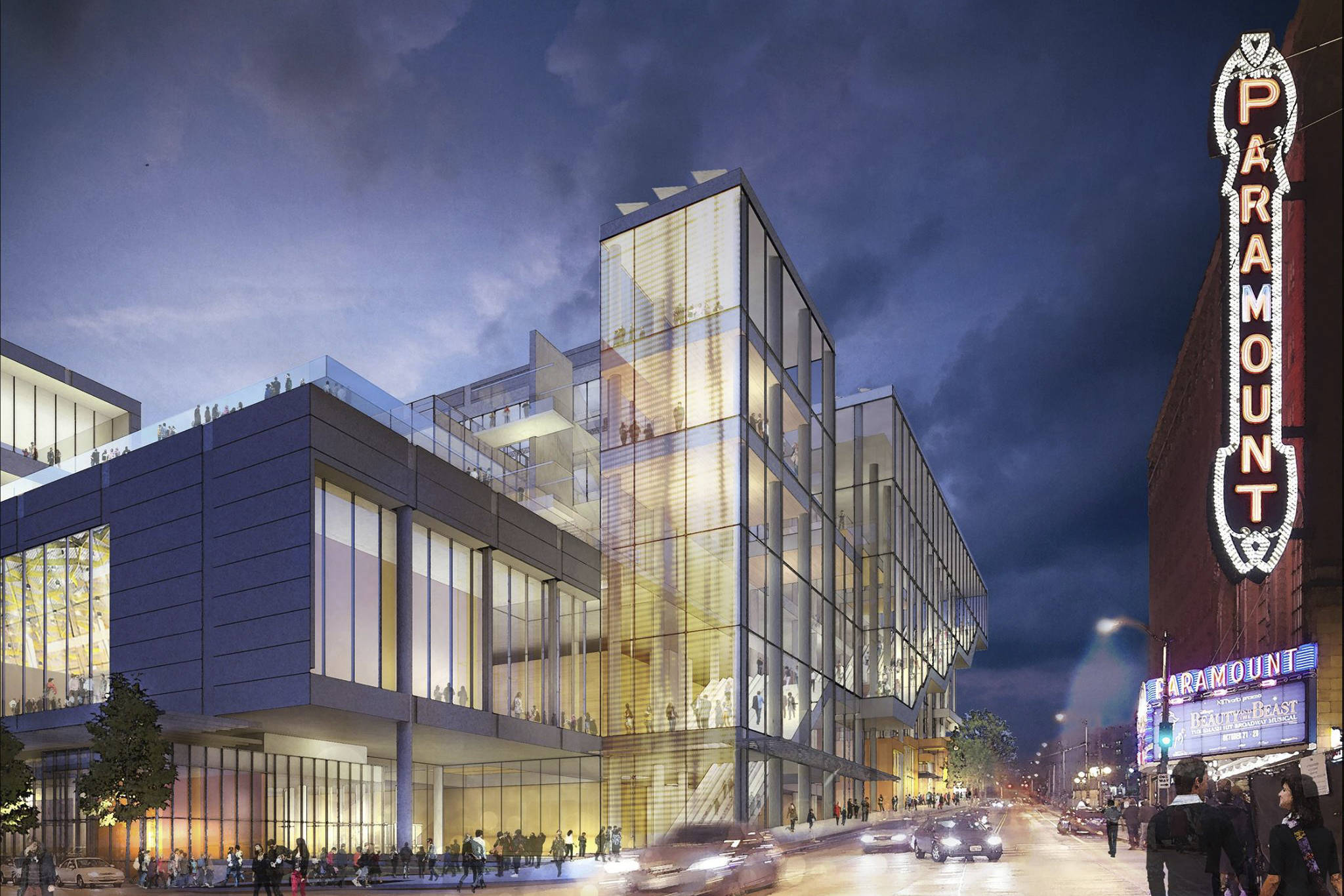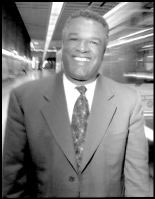Starting Monday, Sept. 26, tens of thousands more commuters will be using the surface streets of an already congested downtown Seattle. That will be the first weekday commute during a two-year closure and renovation of the Downtown Seattle Transit Tunnel—aka the bus tunnel. All 21 bus routes—approximately 1,100 buses every weekday—that run through the tunnel will use surface streets, mostly Third Avenue, while the tunnel roadbed is modified to accommodate the light-rail system of Sound Transit. An alphabet soup of agencies has been working for months on a plan to ensure that traffic continues to move through downtown. Elected officials, including King County Council President Larry Phillips, D- Magnolia, are concerned, however, that the plan might not be adequate to address the resulting traffic problems.
The bus tunnel has always been controversial. The tunnel’s cut-and-cover construction began in March 1987 and tore up Third Avenue for years, infuriating downtown merchants and many citizens. Phillips believes that the voters’ discontent with the tunnel construction and other major projects at the same time led to a 1989 initiative to limit downtown development. The $444 million tunnel, which was finished in September 1990, was built by the Municipality of Metropolitan Seattle, a transit-and-sewers government that merged with King County in 1994, according to Historylink.org. The 1.3-mile tunnel has five stations and runs mostly under Third Avenue from the International District Station (Fifth Avenue South and South Jackson Street) to the Convention Place Station (Pine Street and Ninth Avenue). At the time of its original construction, rails were installed in the tunnel in anticipation of light rail. In 1998, a King County audit revealed that the rails had been installed without the proper insulation and were unusable, according to reports in the Seattle Post-Intelligencer. “You shouldn’t have laid rails in the first place,” says Phillips.
Now Sound Transit, the three-county transit agency that is building light rail from downtown to Tukwila, is paying for a $26 million renovation and expansion of the tunnel. Over the next 24 months, Sound Transit will replace and insulate the rails, ensuring that stray electrical current does not corrode nearby water pipes. The agency will also lower the rail bed by 6 inches to accommodate low-floor rail cars and buses. Transportation planners currently favor low-floor transit vehicles because they make loading passengers so much faster. The low-floor cars were not the industry standard during the bus tunnel’s original construction, so this extensive work would have been done regardless of the faulty track insulation. The tunnel will have its fire, safety, mechanical, and electrical systems upgraded to meet new homeland security requirements and as part of standard maintenance. The tunnel is also being expanded under Pine Street so trains have a place to turn around at the end of the line and to create a staging area so the tunnel will not have to be shut down again for the next phase of light-rail construction, of an underground line to Capitol Hill and Husky Stadium, which is to begin in 2008 or 2009 if federal funding is secured.
If all goes according to schedule, the renovated tunnel will reopen in September 2007 and be used exclusively by buses for nearly two years. Starting in July 2009, light-rail service is scheduled to begin, and buses and trains will use the tunnel jointly. This will be the first time in the United States that buses and trains will share a tunnel that includes passenger stations.
Light-rail critics have long argued that trains will not carry as many passengers as buses and are an inefficient use of public resources. Sound Transit’s supporters say light rail is a proven technology that many commuters prefer to ride instead of buses.
Critics also worry about the safety of dual uses in the tunnel, especially since some of the buses will actually cross rail tracks in the tunnel. “An accident could lead to a fire in the tunnel,” says transportation consultant and former Democratic state Rep. Dick Nelson. Sound Transit says it conducted a hazard analysis of joint use for the Federal Transit Administration that proved such operation would meet federal safety guidelines.
In the short term, the main concern about the tunnel is how its closure will affect downtown traffic. The $16 million mitigation plan brings many small changes for bus riders and drivers downtown—and a few big ones. The biggest is that Third Avenue between Yesler Way and Stewart Street is now “a transit-priority street” every weekday from 6 to 9 a.m. and 3 to 7 p.m., with other vehicles only permitted to travel for one or two blocks to the nearest right turn. That change has already happened. No left turns are permitted during these periods. Seattle police will be vigorously enforcing the new rules. Some surface bus routes will change streets; there will be a new “skip-stop” pattern for buses on Third Avenue; and some intersections have been reconfigured to facilitate traffic flow. King County Metro spokesperson Linda Thielke says 100,000 bus riders will be affected by the changes. “We are going to keep downtown moving,” says Sound Transit CEO Joni Earl.
Everyone is anticipating that the transition might be bumpy, however. Phillips says that past experience has taught him to have a healthy skepticism about the plans. “I hope that they are right and I am wrong,” he says.








